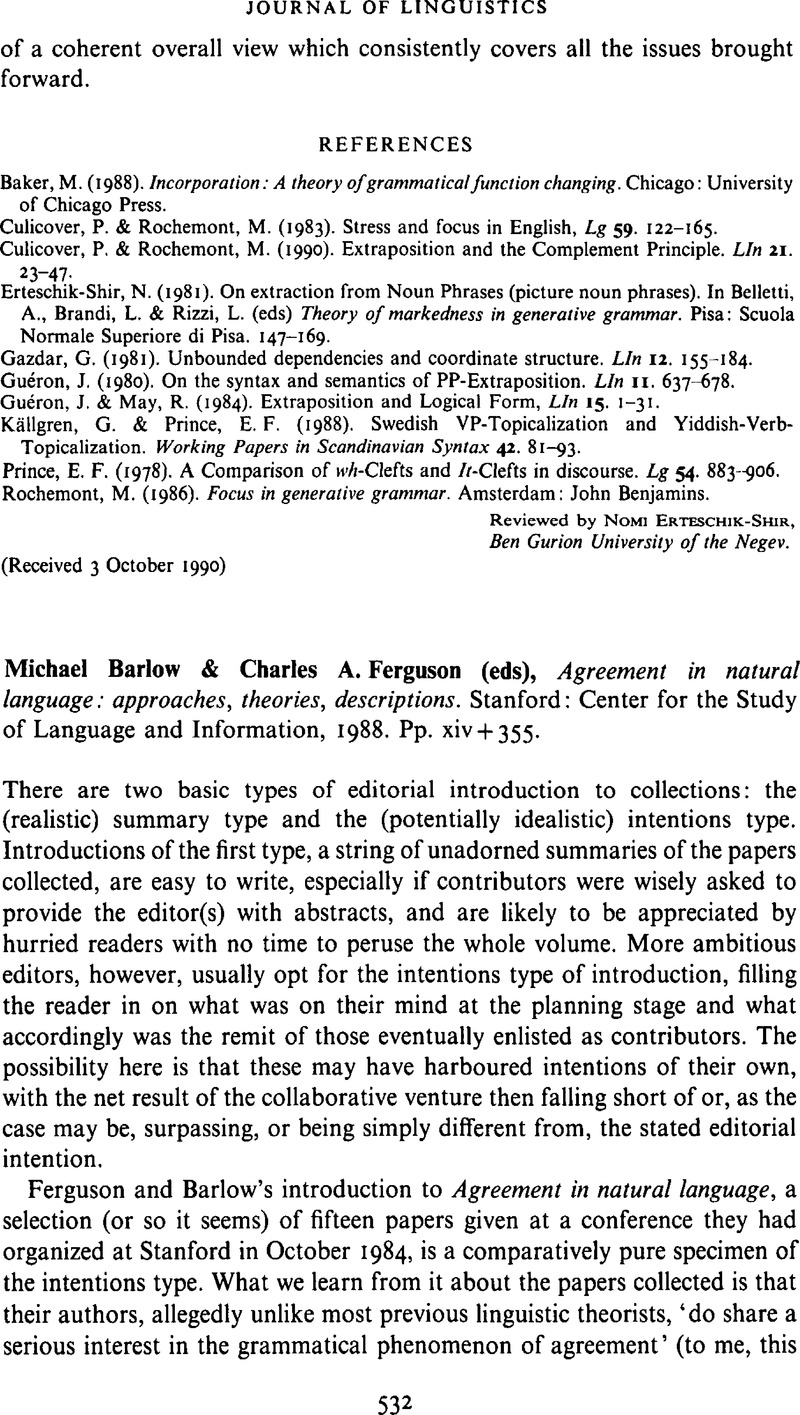Moravcsik, E. A. (
1971).
Agreement.
Working Papers on Language Universals 5,
A1–A63. Revised version in Greenberg, J. H., Ferguson, C. A. & Moravcsik, E. A. (eds)
Universals of human language, vol. 4:
Syntax. Stanford: Stanford University Press, 1978. 331–374.
Google Scholar 